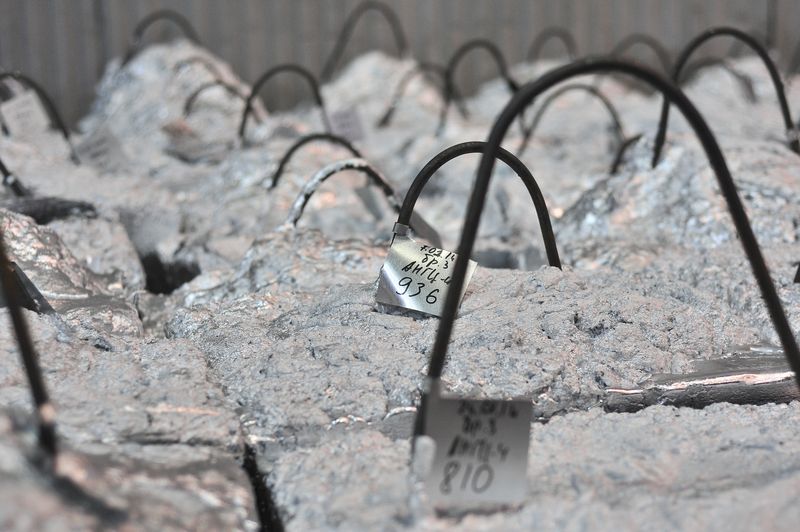By Pratima Desai
LONDON (Reuters) - Until zinc demand picks up significantly and the market stops focusing on projected surpluses of the metal used to galvanise steel, price rallies triggered by production cuts are unlikely to be sustained.
On January 15, Nyrstar announced it would suspend its Budel smelting operations in the Netherlands due to high energy costs. Zinc prices on the London Metal Exchange (LME) on that day hit $2,615 a metric ton, the highest in more than a week.
But since then prices have dropped 6% to around $2,450.
"The only way to get higher zinc prices is higher demand; you can't cut your way to higher prices. The solution to weak demand isn't higher prices," said Jay Tatum Portfolio manager at Valent Asset Management.
An important gauge of demand for zinc and other base metals are surveys of purchasing managers in manufacturing around the world, which for much of last year showed shrinking activity.
This has meant demand growing at a slower pace than supply, particularly in top producer and consumer China, where consumption failed to pick up as expected after the country abandoned its zero COVID policy.
"We expect European zinc demand to decline 4.0% in 2023 due to weakness in the manufacturing sector and construction sector," HSBC (LON:HSBA) analysts said in a note, adding that they expect demand to grow marginally in North America.
"The weak property sector in China has resulted in lower demand for zinc, largely offset by robust demand from non-property sectors."
HSBC estimates Chinese zinc demand rose 2.3% in 2023 and will grow by 2.9% in 2024. It forecasts the surplus last year at 111,000 tons and 89,000 for this year.
Global zinc supplies this year are estimated at around 14 million tons.

On the LME market, a lack of concern about zinc supplies can be seen in the discount for the cash over the three-month zinc contracts for most of the last nine months. The discount spiked above $30 a ton last September to its highest since December 2020.
Surpluses are also seen in deliveries of zinc to warehouses registered by the LME, a market of last resort, which at 199,125 tons are up nearly 200% since November.